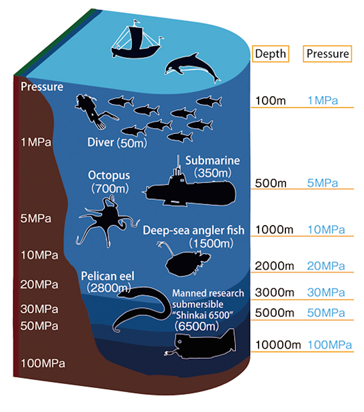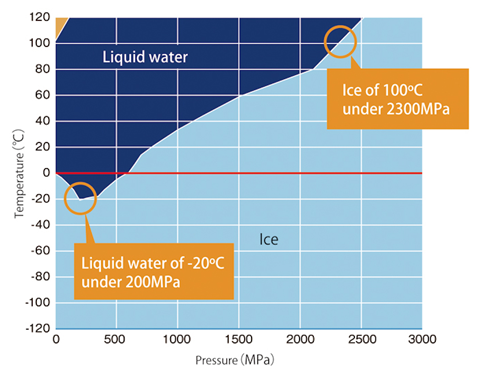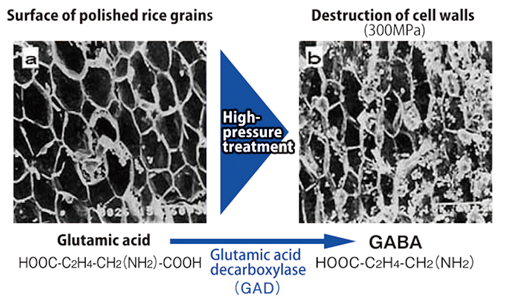HIGH-PRESSURE TREATMENT
What is high-pressure treatment?
What is high-pressure treatment?
The high-pressure treatment is mainly used for food processing by taking advantage of hydrostatic pressure.
The high-pressure treatment is more suitable for future food processing because of less decomposition of nutrients, less production of harmful materials, lower energy consumption compared with heating treatment. Furthermore, high-pressure treatment is possible uniform processing for all parts in a pressure vessel.
Water depth and hydrostatic pressure
Hydrostatic pressure increases in proportion to water depth. The pressure increases by 1 atom (0.1 MPa) for every 10 m the distance below the water surface increases. The hydrostatic pressure of 100 MPa is applied at the bottom of the Mariana Trench at a depth of 10,000 m. The artificially generated hydrostatic pressure inside a pressure vessel is used.

Changes in state of water under application of pressure
Liquid water changes into ice at 0ºC and boils at 100ºC at 1 atom (0.1 MPa), but water assumes different behaviors under high pressures. Pressure and heat are independent state-transforming factors. Utilization of pressure enables food processing completely different from heating treatment

Destruction of cell wall by high-pressure treatment
High-pressure treatment can physically destroy hard tissues such as cell walls. Destruction of such tissues improves liquid permeability and extraction efficiency of components from food, changes texture of food, and accelerates enzyme reaction induced by endogenous enzymes in food.


